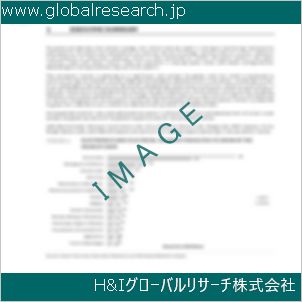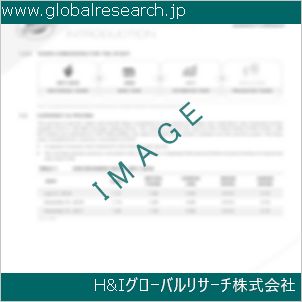Table of Contents
1 Industry Overview of Vinylacetate
1.1 Definition and Specifications of Vinylacetate
1.1.1 Definition of Vinylacetate
1.1.2 Specifications of Vinylacetate
1.2 Classification of Vinylacetate
1.3 Applications of Vinylacetate
1.3.1 Nuclear Application
1.3.2 Non-Nuclear Application
1.4 Industry Chain Structure of Vinylacetate
1.5 Industry Overview and Major Regions Status of Vinylacetate
1.5.1 Industry Overview of Vinylacetate
1.5.2 Global Major Regions Status of Vinylacetate
1.6 Industry Policy Analysis of Vinylacetate
1.7 Industry News Analysis of Vinylacetate
2 Manufacturing Cost Structure Analysis of Vinylacetate
2.1 Raw Material Suppliers and Price Analysis of Vinylacetate
2.2 Equipment Suppliers and Price Analysis of Vinylacetate
2.3 Labor Cost Analysis of Vinylacetate
2.4 Other Costs Analysis of Vinylacetate
2.5 Manufacturing Cost Structure Analysis of Vinylacetate
2.6 Manufacturing Process Analysis of Vinylacetate
3 Technical Data and Manufacturing Plants Analysis of Vinylacetate
3.1 Capacity and Commercial Production Date of Global Vinylacetate Major Manufacturers in 2023
3.2 Manufacturing Plants Distribution of Global Vinylacetate Major Manufacturers in 2023
3.3 R&D Status and Technology Source of Global Vinylacetate Major Manufacturers in 2023
3.4 Raw Materials Sources Analysis of Global Vinylacetate Major Manufacturers in 2023
4 Capacity, Production and Revenue Analysis of Vinylacetate by Regions, Types and Manufacturers
4.1 Global Capacity, Production and Revenue of Vinylacetate by Regions 2019-2024
4.2 Global and Major Regions Capacity, Production, Revenue and Growth Rate of Vinylacetate 2019-2024
4.3 Global Capacity, Production and Revenue of Vinylacetate by Types 2019-2024
4.4 Global Capacity, Production and Revenue of Vinylacetate by Manufacturers 2019-2024
5 Price, Cost, Gross and Gross Margin Analysis of Vinylacetate by Regions, Types and Manufacturers
5.1 Price, Cost, Gross and Gross Margin Analysis of Vinylacetate by Regions 2019-2024
5.2 Price, Cost, Gross and Gross Margin Analysis of Vinylacetate by Types 2019-2024
5.3 Price, Cost, Gross and Gross Margin Analysis of Vinylacetate by Manufacturers 2019-2024
6 Consumption Volume, Consumption Value and Sale Price Analysis of Vinylacetate by Regions, Types and Applications
6.1 Global Consumption Volume and Consumption Value of Vinylacetate by Regions 2019-2024
6.2 Global and Major Regions Consumption Volume, Consumption Value and Growth Rate of Vinylacetate 2019-2024
6.3 Global Consumption Volume and Consumption Value of Vinylacetate by Types 2019-2024
6.4 Global Consumption Volume and Consumption Value of Vinylacetate by Applications 2019-2024
6.5 Sale Price of Vinylacetate by Regions 2019-2024
6.6 Sale Price of Vinylacetate by Types 2019-2024
6.7 Sale Price of Vinylacetate by Applications 2019-2024
6.8 Market Share Analysis of Vinylacetate by Different Sale Price Levels
7 Supply, Import, Export and Consumption Analysis of Vinylacetate
7.1 Supply, Consumption and Gap of Vinylacetate 2019-2024
7.2 Global Capacity, Production, Price, Cost, Revenue, Supply, Import, Export and Consumption of Vinylacetate 2019-2024
7.3 USA Capacity, Production, Price, Cost, Revenue, Supply, Import, Export and Consumption of Vinylacetate 2019-2024
7.4 EU Capacity, Production, Price, Cost, Revenue, Supply, Import, Export and Consumption of Vinylacetate 2019-2024
7.5 China Capacity, Production, Price, Cost, Revenue, Supply, Import, Export and Consumption of Vinylacetate 2019-2024
7.6 Japan Capacity, Production, Price, Cost, Revenue, Supply, Import, Export and Consumption of Vinylacetate 2019-2024
8 Major Manufacturers Analysis of Vinylacetate
8.1 Manufacturer One
8.1.1 Company Profile
8.1.2 Product Picture and Specifications
8.1.2.1 Type I
8.1.2.2 Type II
8.1.2.3 Type III
8.1.3 Capacity, Production, Price, Cost, Gross and Revenue
8.1.4 Contact Information
8.2 Manufacturer Two
8.2.1 Company Profile
8.2.2 Product Picture and Specifications
8.2.2.1 Type I
8.2.2.2 Type II
8.2.2.3 Type III
8.2.3 Capacity, Production, Price, Cost, Gross and Revenue
8.2.4 Contact Information
8.3 Manufacturer Three
8.3.1 Company Profile
8.3.2 Product Picture and Specifications
8.3.2.1 Type I
8.3.2.2 Type II
8.3.2.3 Type III
8.3.3 Capacity, Production, Price, Cost, Gross and Revenue
8.3.4 Contact Information
8.4 Manufacturer Four
8.4.1 Company Profile
8.4.2 Product Picture and Specifications
8.4.2.1 Type I
8.4.2.2 Type II
8.4.2.3 Type III
8.4.3 Capacity, Production, Price, Cost, Gross and Revenue
8.4.4 Contact Information
8.5 Manufacturer Five
8.5.1 Company Profile
8.5.2 Product Picture and Specifications
8.5.2.1 Type I
8.5.2.2 Type II
8.5.2.3 Type III
8.5.3 Capacity, Production, Price, Cost, Gross and Revenue
8.5.4 Contact Information
…
9 Marketing Trader or Distributor Analysis of Vinylacetate
9.1 Marketing Channels Status of Vinylacetate
9.2 Traders or Distributors with Contact Information of Vinylacetate by Regions
9.3 Ex-work Price, Channel Price and End Buyer Price Analysis of Vinylacetate
9.4 Regional Import, Export and Trade Analysis of Vinylacetate
10 Industry Chain Analysis of Vinylacetate
10.1 Upstream Major Raw Materials Suppliers Analysis of Vinylacetate
10.1.1 Major Raw Materials Suppliers with Contact Information Analysis of Vinylacetate
10.1.2 Major Raw Materials Suppliers with Supply Volume Analysis of Vinylacetate by Regions
10.2 Upstream Major Equipment Suppliers Analysis of Vinylacetate
10.2.1 Major Equipment Suppliers with Contact Information Analysis of Vinylacetate
10.2.2 Major Equipment Suppliers with Product Pictures Analysis of Vinylacetate by Regions
10.3 Downstream Major Consumers Analysis of Vinylacetate
10.3.1 Major Consumers with Contact Information Analysis of Vinylacetate
10.3.2 Major Consumers with Consumption Volume Analysis of Vinylacetate by Regions
10.4 Supply Chain Relationship Analysis of Vinylacetate
11 Development Trend of Analysis of Vinylacetate
11.1 Capacity, Production and Revenue Forecast of Vinylacetate by Regions and Types
11.1.1 Global Capacity, Production and Revenue of Vinylacetate by Regions 2024-2029
11.1.2 Global and Major Regions Capacity, Production, Revenue and Growth Rate of Vinylacetate 2024-2029
11.1.3 Global Capacity, Production and Revenue of Vinylacetate by Types 2024-2029
11.2 Consumption Volume and Consumption Value Forecast of Vinylacetate by Regions, Types and Applications
11.2.1 Global Consumption Volume and Consumption Value of Vinylacetate by Regions 2024-2029
11.2.2 Global and Major Regions Consumption Volume, Consumption Value and Growth Rate of Vinylacetate 2024-2029
11.2.3 Global Consumption Volume and Consumption Value of Vinylacetate by Types 2024-2029
11.2.4 Global Consumption Volume and Consumption Value of Vinylacetate by Applications 2024-2029
11.3 Supply, Import, Export and Consumption Forecast of Vinylacetate
11.3.1 Supply, Consumption and Gap of Vinylacetate 2024-2029
11.3.2 Global Capacity, Production, Price, Cost, Revenue, Supply, Import, Export and Consumption of Vinylacetate 2024-2029
11.3.3 USA Capacity, Production, Price, Cost, Revenue, Supply, Import, Export and Consumption of Vinylacetate 2024-2029
11.3.4 EU Capacity, Production, Price, Cost, Revenue, Supply, Import, Export and Consumption of Vinylacetate 2024-2029
11.3.5 China Capacity, Production, Price, Cost, Revenue, Supply, Import, Export and Consumption of Vinylacetate 2024-2029
11.3.6 Japan Capacity, Production, Price, Cost, Revenue, Supply, Import, Export and Consumption of Vinylacetate 2024-2029
12 New Project Investment Feasibility Analysis of Vinylacetate
12.1 New Project SWOT Analysis of Vinylacetate
12.2 New Project Investment Feasibility Analysis of Vinylacetate
13 Conclusion of the Global Vinylacetate (CAS 108-05-4) Industry 2024 Market Research Report
| ※参考情報 酢酸ビニル(Vinyl acetate、CAS 108-05-4)は、重要な有機化合物の一つであり、化学式は C4H6O2 です。この化合物は、無色透明の液体であり、特有の甘い香りを持っており、主にポリマーの製造に使用されます。酢酸ビニルは、エチレンと酢酸のエステル化反応によって生成され、一般的には、フリーラジカル重合法によってポリビニル酢酸(PVA)やポリビニルアセテート(PVAc)等のポリマーに変換されることが多いです。 酢酸ビニルにはいくつかの特徴があります。まず、化学的には安定であり、自燃性が低く、常温では比較的取り扱いやすい物質です。また、結果として得られるポリマーは、優れた接着性や柔軟性を持ち、耐水性や耐薬品性が高いという特性を有しています。このため、様々な用途に幅広く利用されています。 酢酸ビニルの種類としては、主にその製造方法や分子量によって分類されるポリマーが考えられます。よく知られているのが、ポリビニルアセテート(PVAc)で、これは酢酸ビニルの重合体であり、接着剤や塗料、コーティング剤などに使用されています。一方、ポリビニルアルコール(PVA)は、PVAcを水酸化処理することによって得られ、水溶性の高いポリマーであり、繊維、紙、食品包装などの用途があります。 酢酸ビニルの用途は多岐にわたります。まず、最も一般的な利用方法は接着剤の製造です。PVAcを使用した接着剤は、木材接着や紙加工などの分野で頻繁に使用されています。また、塗料やコーティング材にも広く使われ、特に水性塗料や外装塗料においてその優れた耐久性と柔軟性が求められています。さらに、酢酸ビニルを基にしたポリマーは、洗剤等の乳化剤や、化粧品、医療用材料でも利用されています。 関連技術としては、ポリマー合成技術が挙げられます。フリーラジカル重合法はその代表的なものであり、合成の効率性や特性を調整するための新しい技術開発が進められています。たとえば、遷移金属触媒を用いた重合法や、界面活性剤を利用した乳化重合技術など、様々なアプローチが模索されています。 加えて、酢酸ビニルの環境への影響を考慮する動きも存在します。持続可能な開発の観点から、バイオマス由来の原料を用いた新しい酢酸ビニルの製造方法や、リサイクル技術が注目されています。これにより、環境負荷を低減しながら、より持続可能な産業構造を構築することが期待されています。 総じて、酢酸ビニルは、化学工業において非常に重要な役割を果たしており、その特性を活かした多様な製品が市場に出回っています。さらなる研究や技術革新を通じて、より高性能で環境に優しい材料の開発が期待されているのです。 |
❖ 免責事項 ❖
http://www.globalresearch.jp/disclaimer












